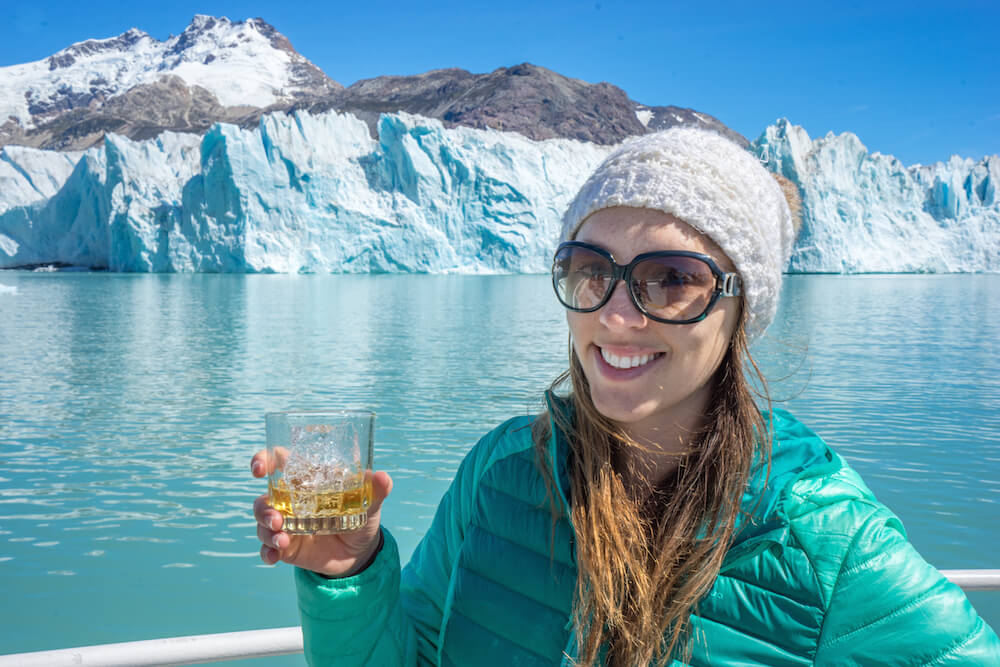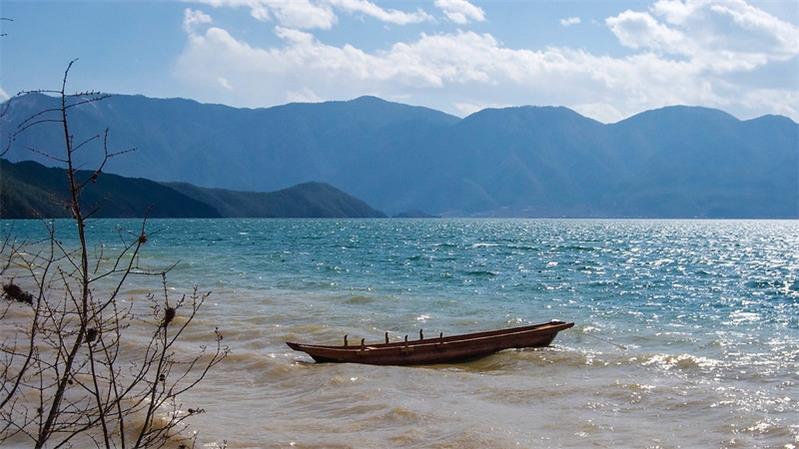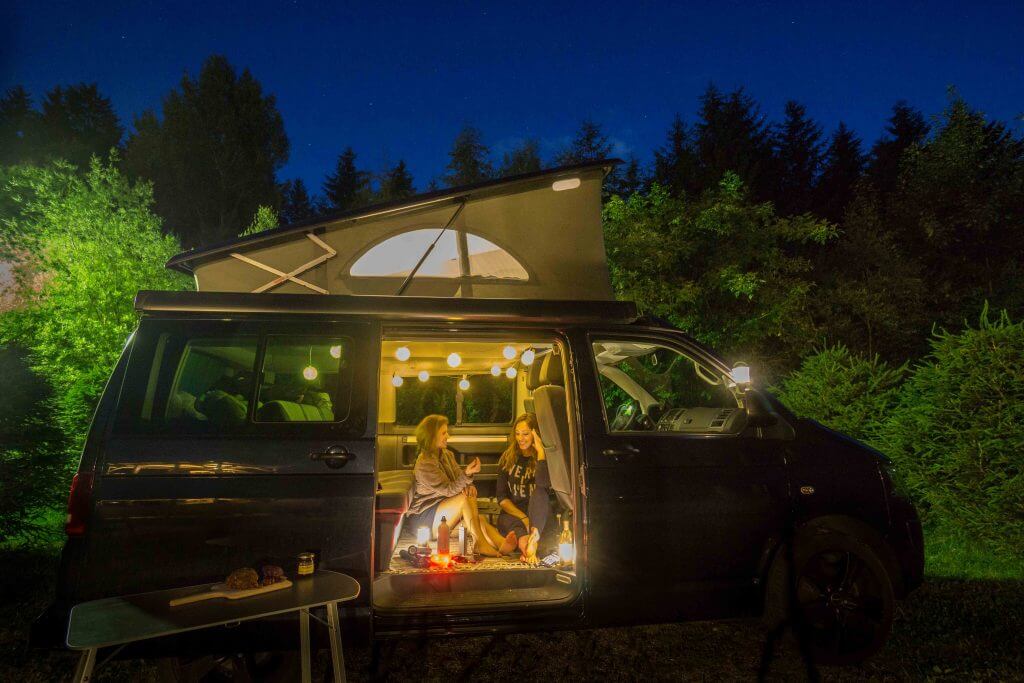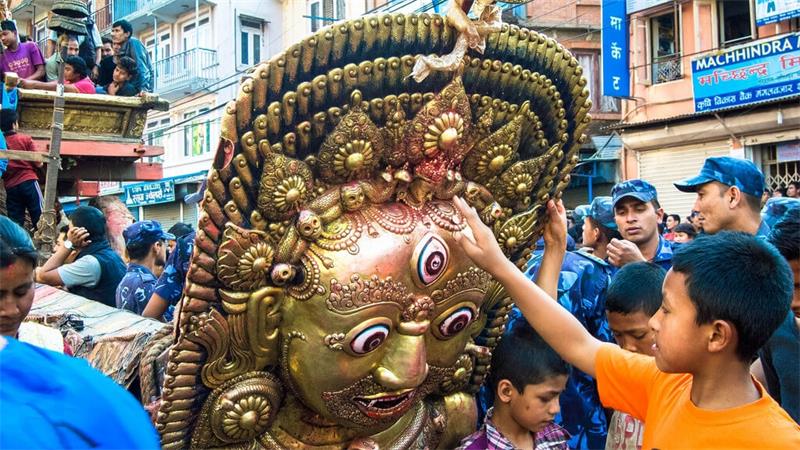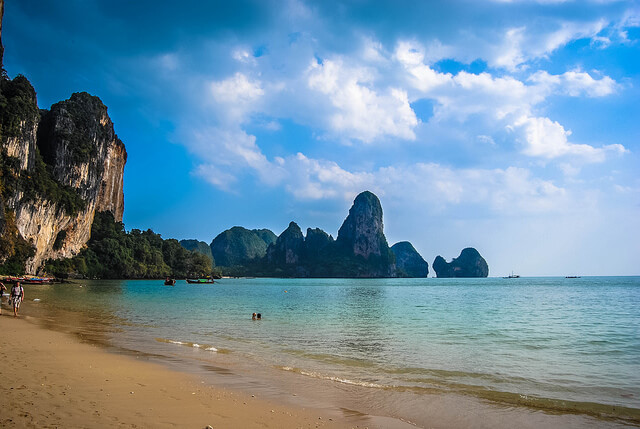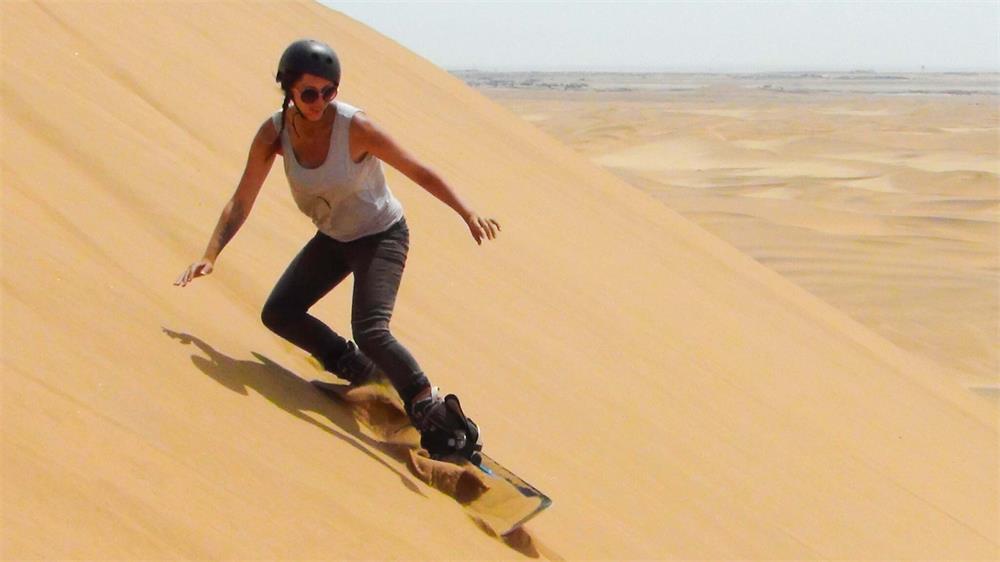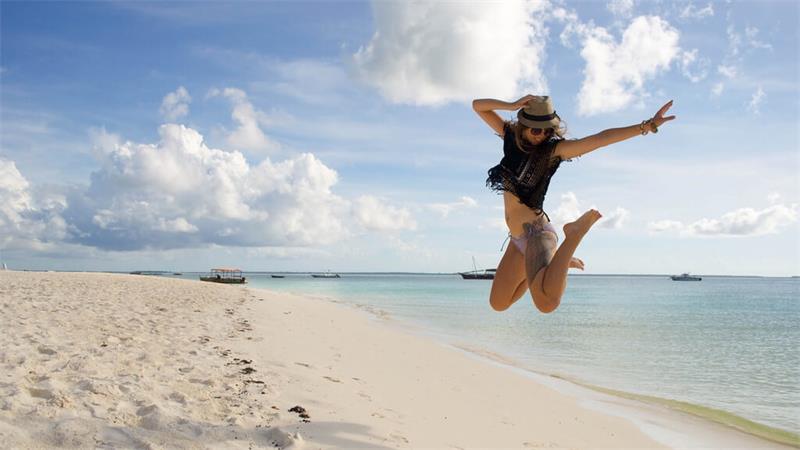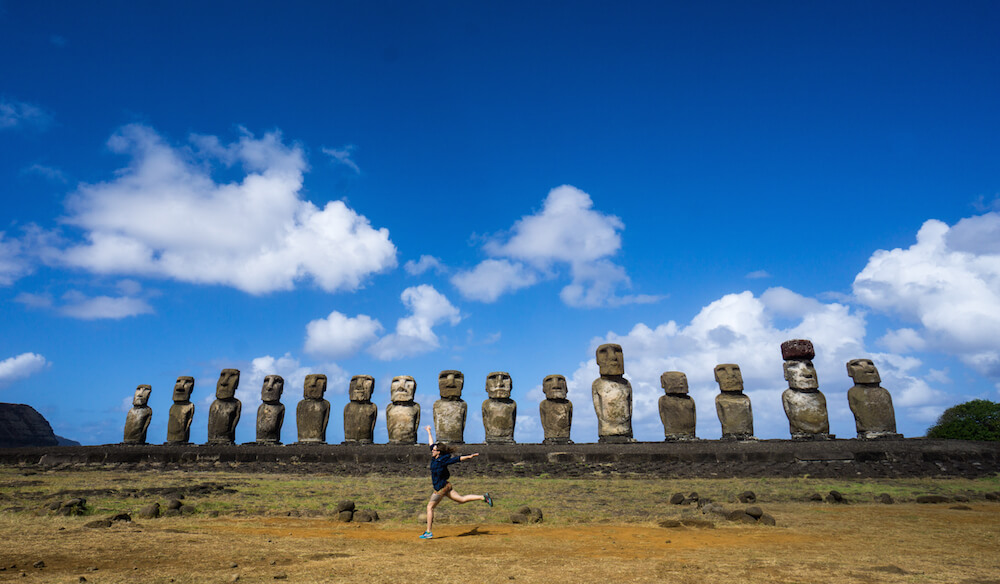
Do you want to visit Easter Island? Are you seeking for the sense of humility that comes with seeing the massive Moai sculptures that loom over us poor mortals? It was just what I was hoping for when I went there in April of this year.
Seeing the Moai in person is just as wonderful as I had imagined. Although no one completely understands the narrative because there are few original Rapa Nui ancestors remaining, the story of the Moai is one of tremendous human creativity and sorrow, and it is a powerful experience to walk among them and ponder about their history.
Are you ready for a trip down memory lane? These are the insider tips for visiting Easter Island on the cheap and easy:
First, some background.
The Moai statues on Easter Island, known locally as Rapa Nui, reflect a mostly vanished civilisation that ran out of resources due to climate change or pests. In order to placate their ancestors and reclaim wealth, they fashioned massive Moai out of volcanic rock and moved them to the island’s outskirts, despite not understanding how to work metal. We’re still not sure how they achieved it. The current record holder is 33 feet tall and weighs more than 82 tons!
People lost trust in these sculptures as the situation worsened, and conflicts erupted, including the toppling of Moai by different parties. Most have been scooped up and replaced, while several remain face down on the grass.
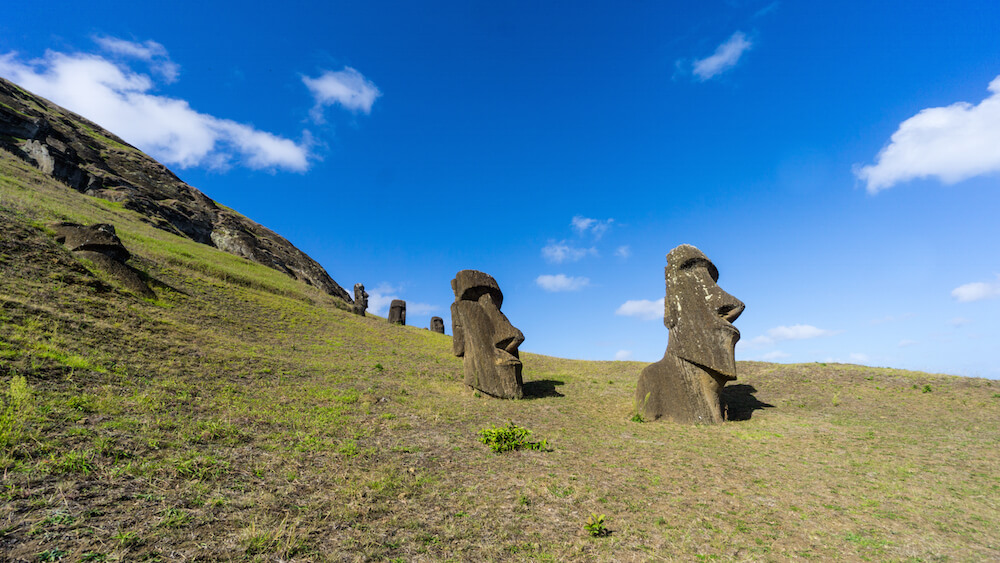
On the island, you can still see the quarry where numerous sculptures are being worked on. It nearly appears as though the Moai decided to throw a party and some of them stumbled drunkenly over the mountain on their way to the sea.
The artifacts are now on an island where virtually all of the original occupants, including plants, animals, and ethnic groups, have vanished. It’s both terrifying and wonderful.
How to Plan Your Own Budget and Save Money
Tours to Easter Island are unnecessary and will cost you considerably more in the long run. It’s quite hard to become disoriented, and even if you do, the island is just 164 square kilometers in size, so you won’t be too disoriented!
Here’s how to accomplish it on your own:
Flights: There is just one plane every day that travels to and from Rapa Nui, and it is operated by LAN from Santiago, Chile. I recommend trying other dates on Google Flights and then booking directly with LAN after you find a fair offer. I bought my trip two weeks before departure for $600 for economy class one way and business class return! A roundtrip flight will typically cost $450 on the low end and closer to $700 on the high end.
Food: Bringing your own food to Easter Island will save you the most money. Virtually all of the food on the island will be delivered by the same plane you’re flying over, so why pay more when you can bring your own food for far less?
While going to Easter Island, LAN allows you to check up to 25 kilograms per person for free, so bring an additional bag or box filled with veggies, dry goods, powdered milk, oats, potatoes, wine, and everything else you need. You spend the entire week. I was able to dine for $4.50 each dinner, plus wine, by organizing my dishes ahead of time and purchasing in Santiago.
When I wanted to supplement my meals, I bought fish from local fisherman for approximately $8 per person or empanadas from the town’s little shops.
*Please keep in mind that you may only do this if you bring the food from Chile. Chile has very stringent restrictions about fruits and vegetables, and anything brought from home will be confiscated, so make sure you do your shopping in Santiago.
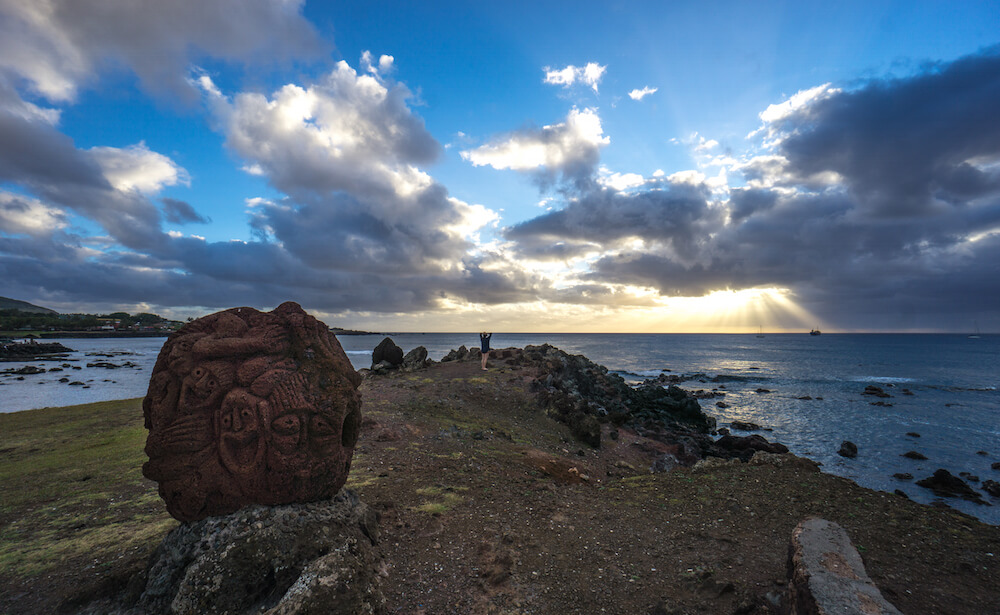
Accommodation: Staying in a cabin owned by an islander might also save you a lot of money. They’re simple to locate on booking.com (here’s one I recommend) and Airbnb (plus, here’s a $35 discount for you! ), can typically accommodate six or seven people for approximately $50+ per night, and, most importantly, come with a kitchen so you can prepare all the food you brought with you.
Cabin owners are also known to bring you up from the airport, which is always convenient after a long travel.
If you’re traveling alone, Airbnb has hostels and single rooms available, as well as camping. But keep in mind that the inexpensive item sells out much sooner.
Getting Around: You don’t have to take a tour to see Easter Island. There are several car, scooter, and quad rental locations in Hanga Roa (the main town) from which you may go to the different sculptures and the beach at your leisure and, in many cases, without encountering any other tourists. You may spend as much time as you like at the various locations, unlike those on bus excursions.
Rentals are fairly pricey by normal standards, at $40 per day for a motorcycle and more for quads and vehicles. But, automobile hiring is typically negotiable, and if you truly optimize your time on the motorcycle, you may visit most of the sights outside of town in a few days and rely on a cheaper push bike rental for the remainder of your stay.
Ask the staff at the rental place you eventually pick to show you a map of the locations. Instead, have a look at this one.
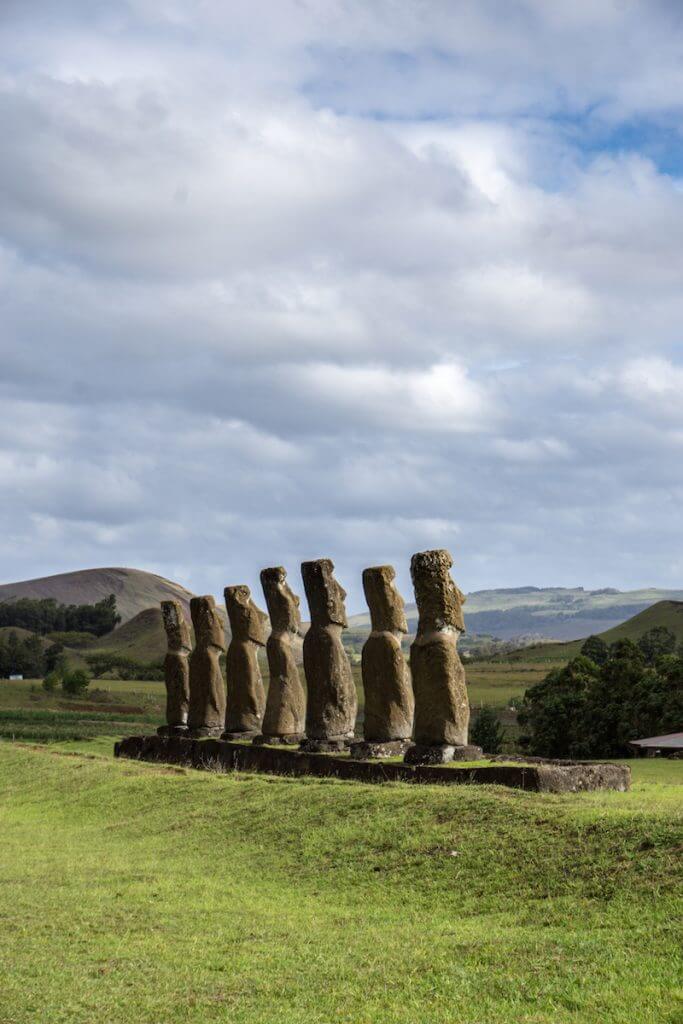
National Park Tickets: National park fees for foreigners are costly, at the equivalent of US$60, levied by CONAF, Chile’s national park services (while there is considerable debate as to whether they should be permitted to do so, that is the policy for the time being).
Rangers will only check you in at two locations: Orongo Crater at the Bird Man Museum, which I could have done without, and the quarry. The quarry is undoubtedly the coolest place on the island, so spit on it and buy the ticket, no matter how unpleasant it is. You may purchase it when you arrive at the airport or at the CONAF office.
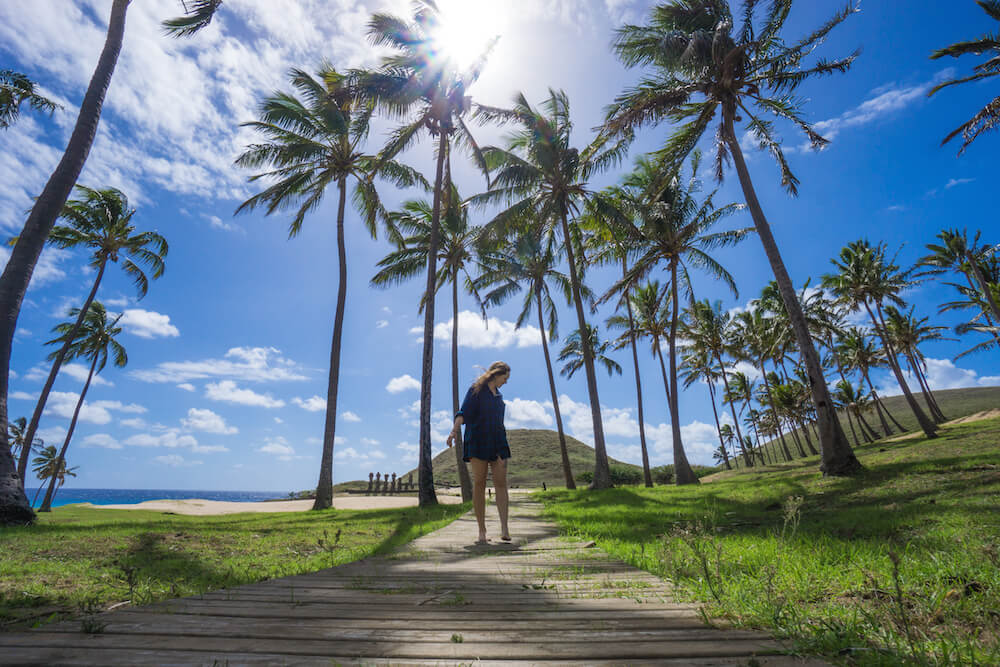
Here’s how to avoid the crowds
Tours stop at precise times at each archaeological site in order to present them in their finest light. It’s usually a good idea to pay them a visit at these times, but also to return during off-peak hours and wait after the buses have departed. They are generally just present for 10 minutes.
Ahu Akivi
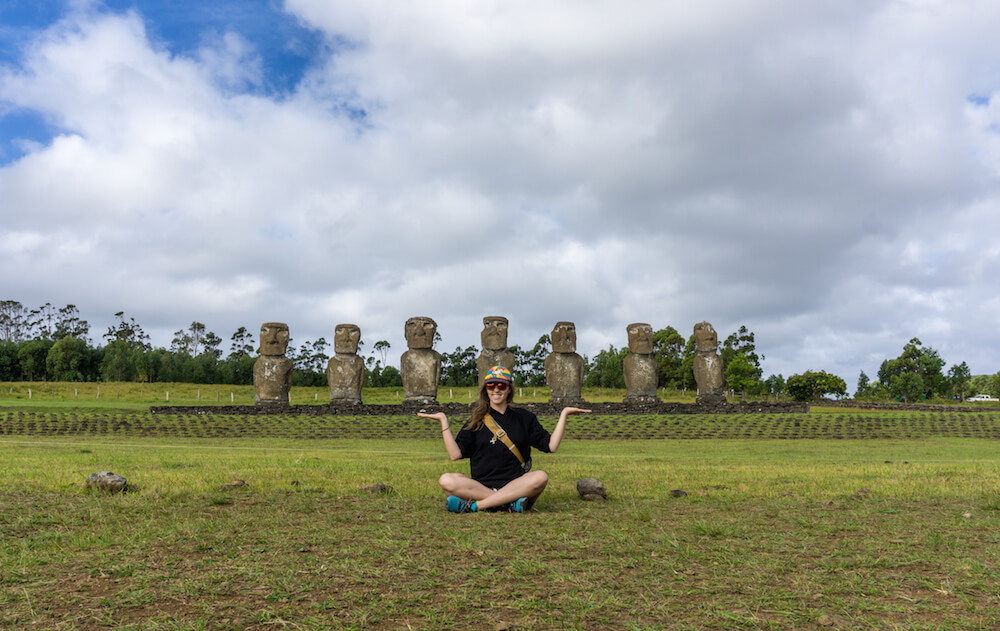
At the vernal equinox, these seven identical sculptures face the sunset, and golden hour is the most popular time to visit. When the light strikes on them. If you arrive a bit sooner or remain a little later, the buses will be mostly gone.
Tongariki style
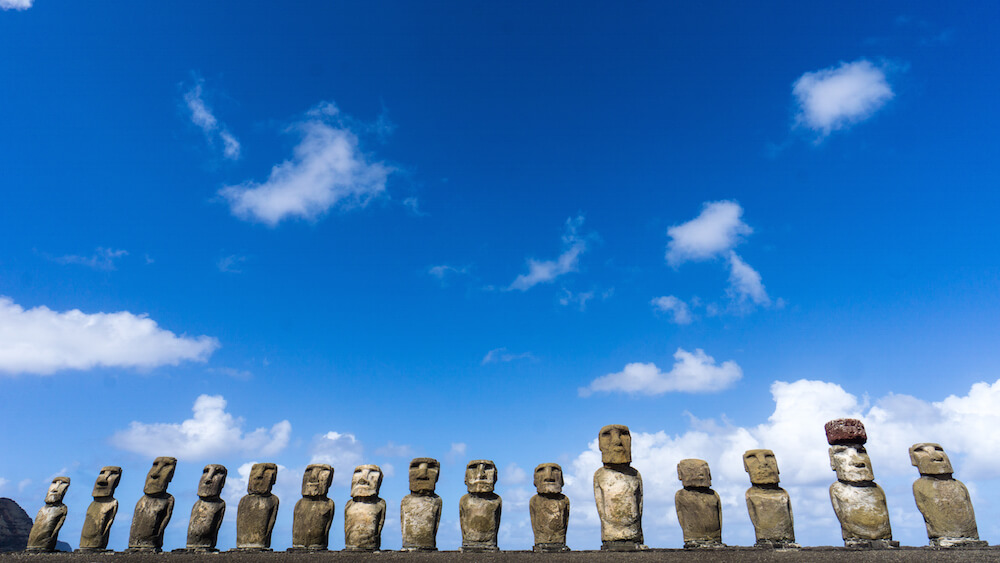
This is the island’s largest Moai collection and the largest statue. All of them have been demolished and rebuilt in the past. They face sunset at the summer solstice, but the most popular time to observe them is dawn since the light rises between them. If you go at another time, you will find very few people.
Rano Raku
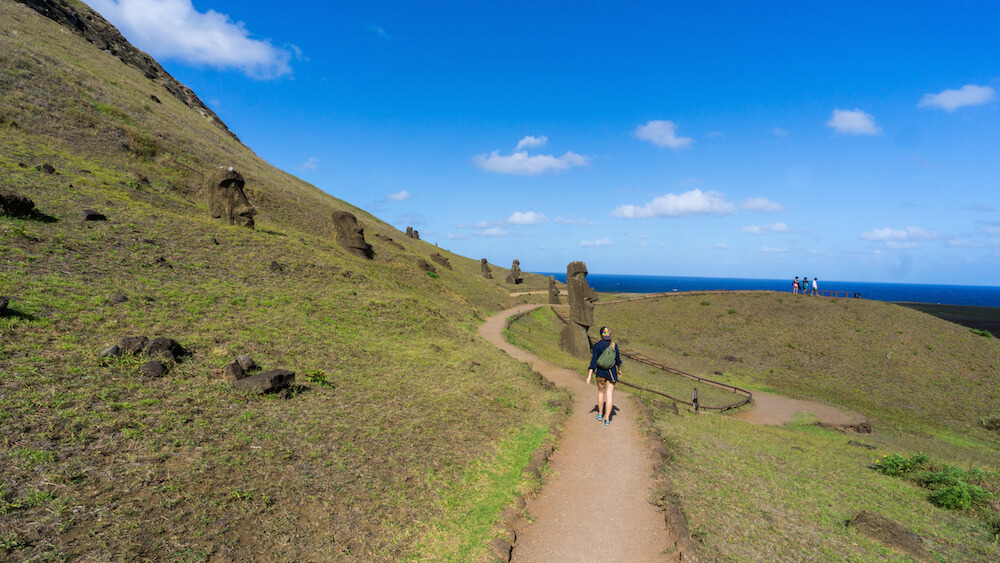
It’s common to visit Rano Raraku, the quarry I keep mentioning, immediately after seeing Ahu Tongariki in the morning. This is when they are at their most effective. Having said that, I paid them a visit in the afternoon and appreciated the tranquil environment. This is one of two areas where you must produce your receipt for your national park fee, and you are only permitted to do so once.
Ranu Kau Volcano and Orongo
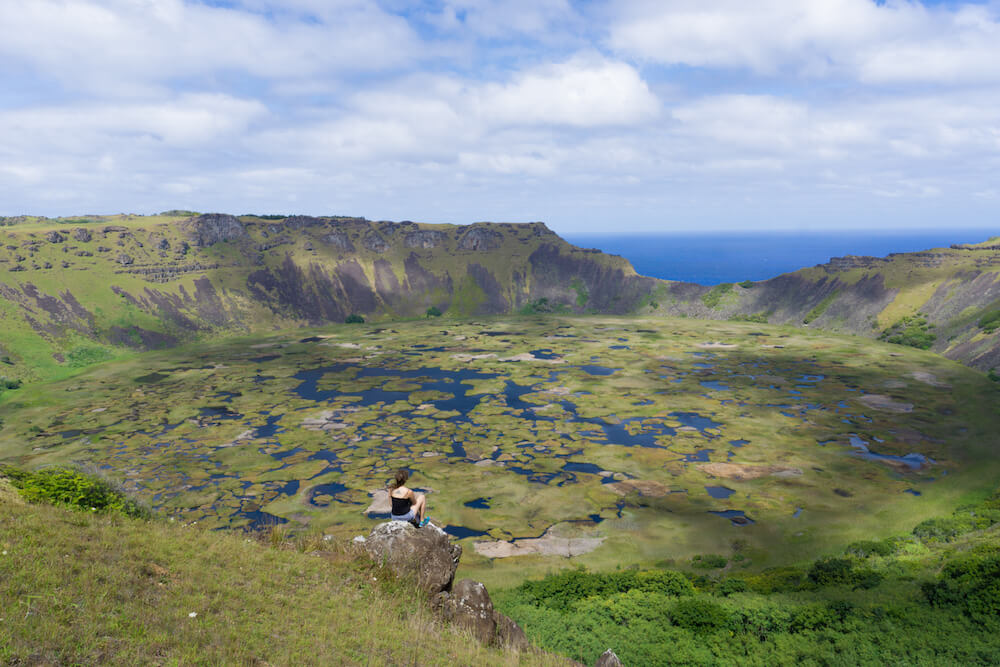
This is one of the most well-known volcanic craters on the island, and you may ride your motorcycle there. When the weather is nice enough, you can see the blue sky reflected in the puddles at the base. It’s also feasible to walk there from the CONAF station.
Within the museum, there are also the Orongo Ruins and the Birdman Narrative, which require you to show your national park fee receipt. It’s an intriguing narrative that’s well worth reading.
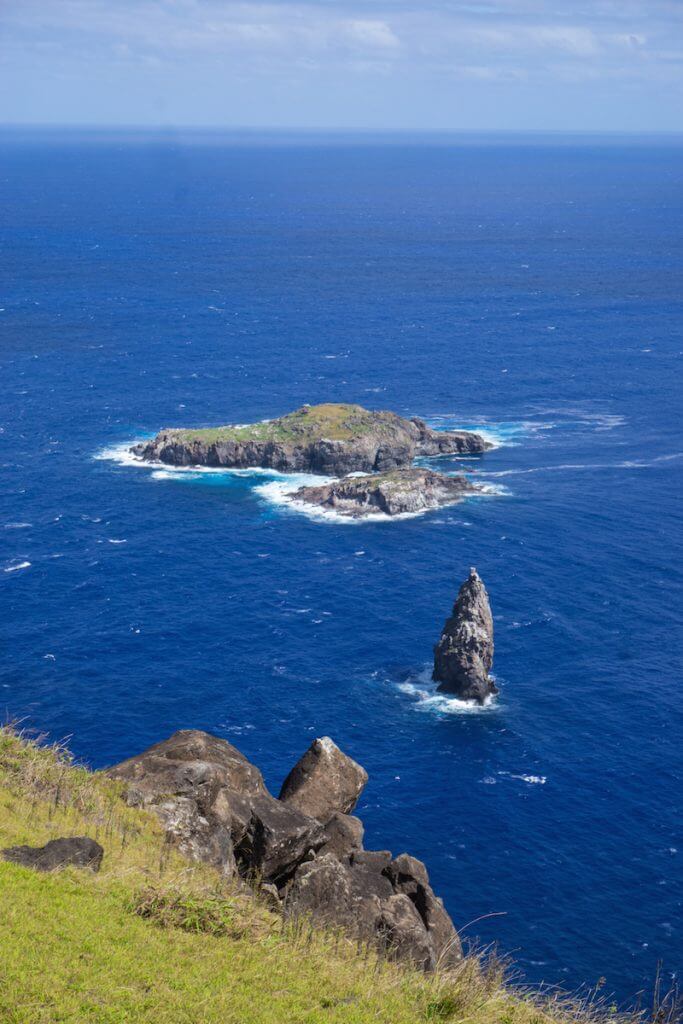
Ahu Tahai
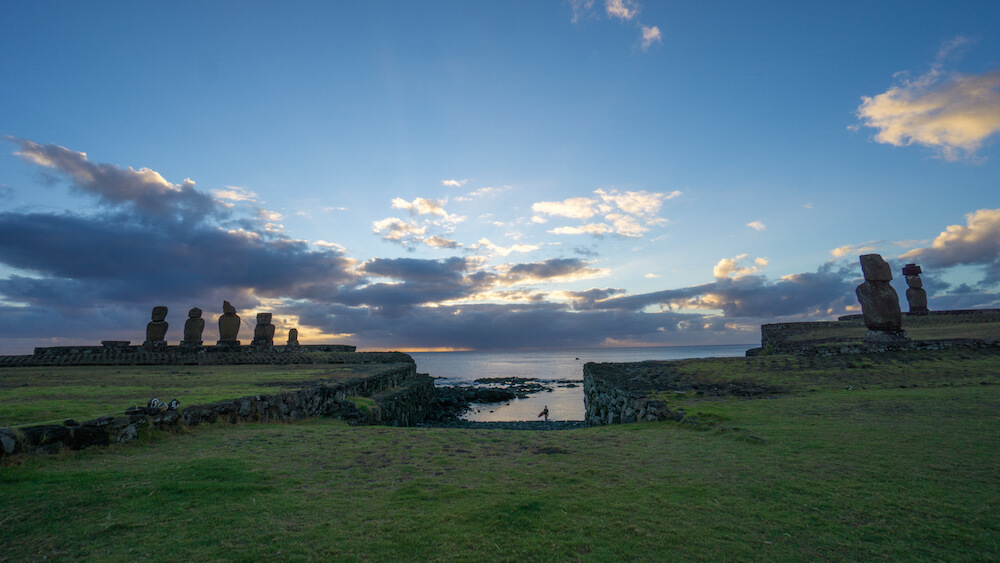
They are the simplest to visit because they are immediately adjacent to Hanga Roa and can be reached on foot if you are staying in town. They are stunning all day, but they are most popular around sunset.
There are several additional sculptures scattered along the island’s perimeter. Some are accessible by automobile, while others can only be reached on foot. The locations mentioned above are the most well-known, but you may visit the others, frequently alone, as you drive about the island and stop to investigate.
What else can you do on Easter Island?
And what if you had a few days to spend on Easter Island? In reality, I stayed for eight days since airfares got too expensive for shorter trips. I spent a lot of time relaxing, but I also loved the beach and diving:
Scuba Diving
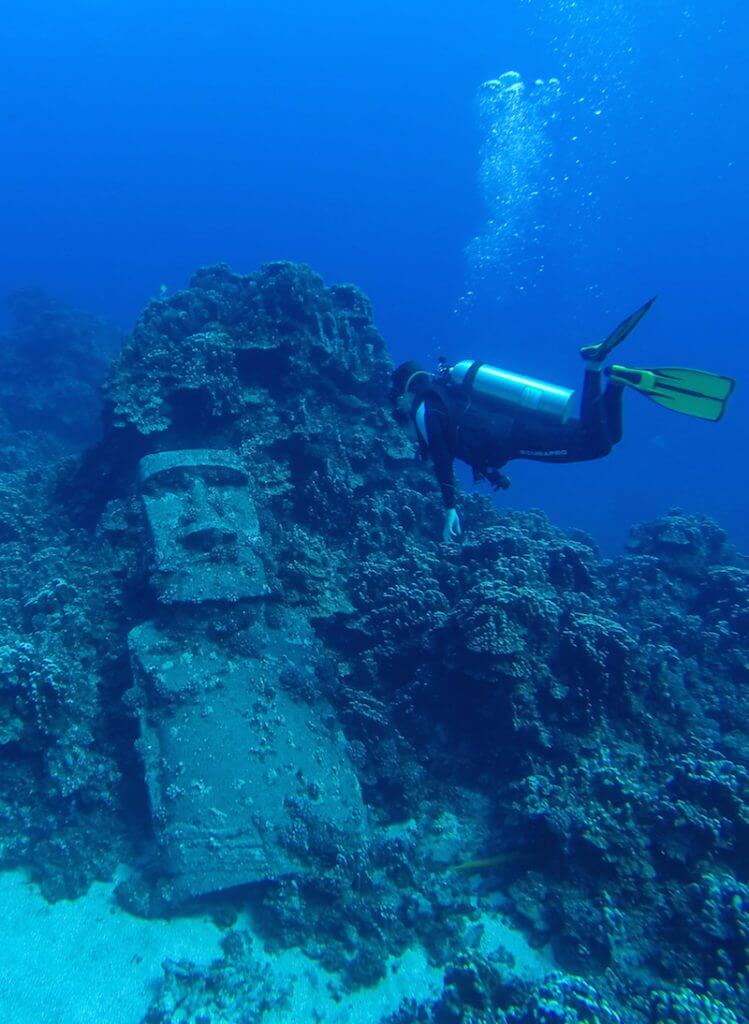
The reefs off the island are lovely, but not world-class like those seen in Indonesia or Borneo. You may, however, snap a selfie with him.
It’s an old movie prop, which made it less cool to me, but it was still an interesting experience.
Surf
Surfing is a popular activity on Easter Island, as seen by the documentary 180° South.
If you wish to attempt it, bear in mind that the shoreline is primarily volcanic rock and the waves break extremely close to the rocks, making it unsuitable for novices. You should also bring your own board because most rentals are large foam boards.
Beach
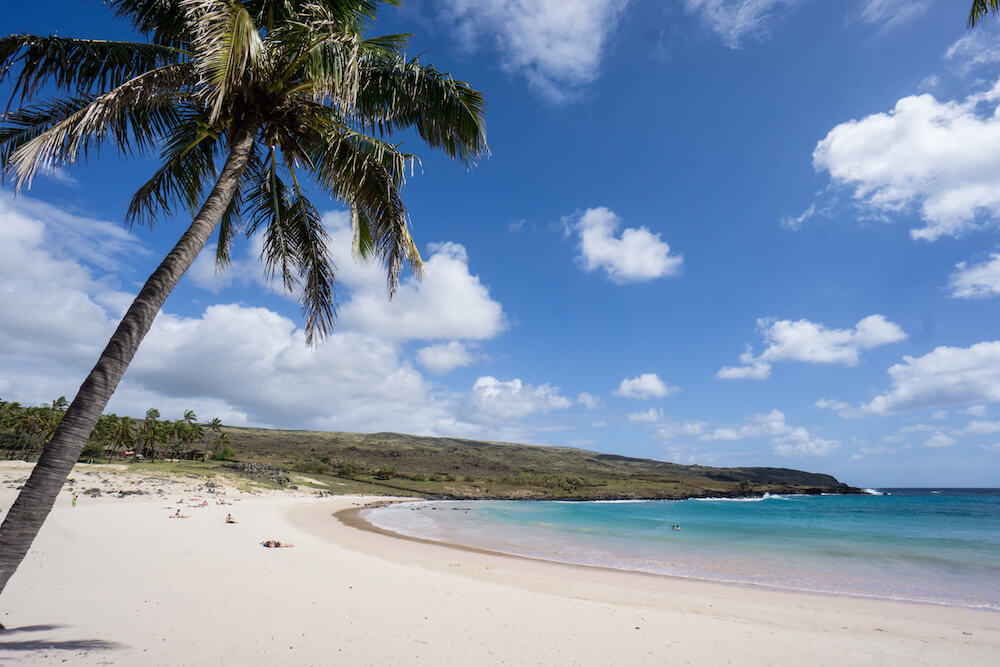
Easter Island’s beach is stunning, with white sand and calm surf. It’s on the opposite side of Hanga Roa Island from where most visitors stay, so you’ll need transportation to get there.
If you’re going to be on the island for a while, this is a terrific way to spend the day.
Here are my top advice for visiting Easter Island on your own. It saves you money, allows you more flexibility, and is fortunately rather simple on Easter Island. Have a safe journey!

